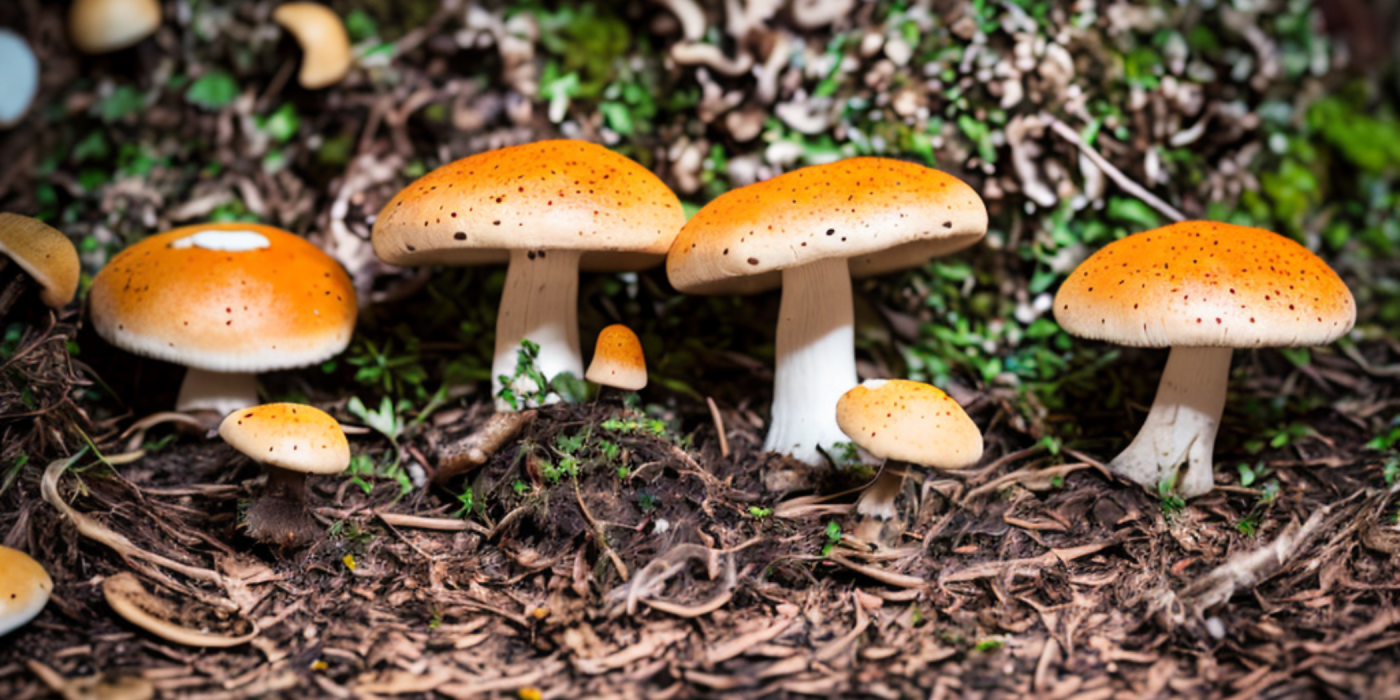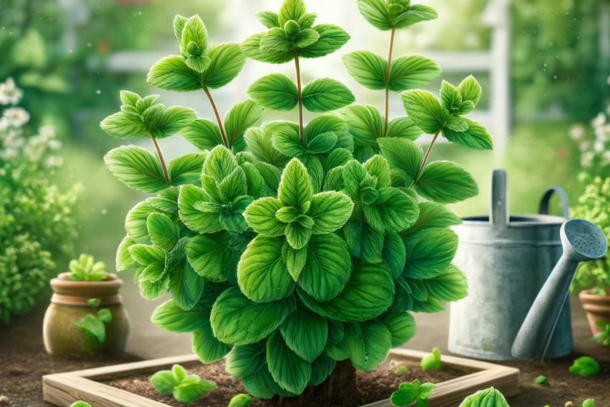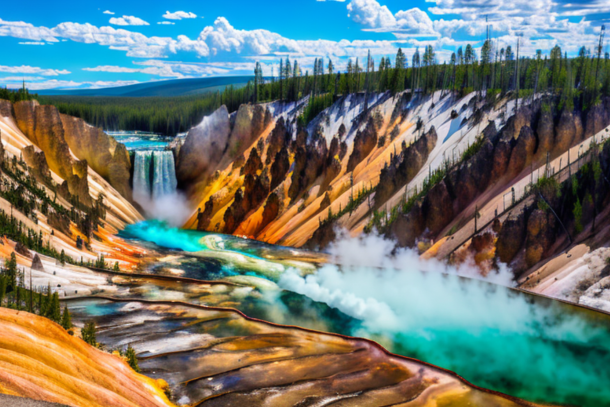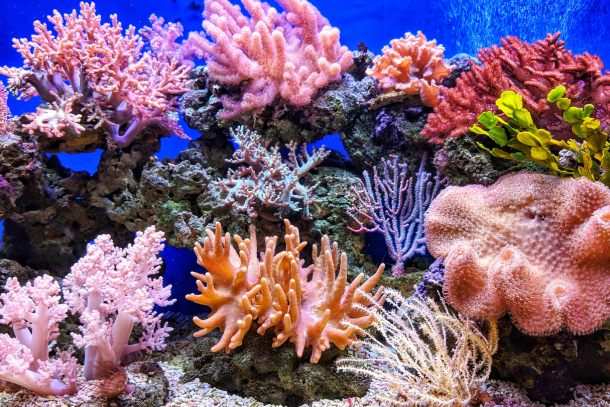Delving into the Fungal Kingdom: A Guide to Identifying and Appreciating British Fungi

Venturing into British woodlands, meadows, or even our very own gardens, many of us are greeted by the often overlooked yet deeply fascinating realm of fungi. These unique organisms, distinctly different from plants and animals, have silently sculpted our environment for millions of years, performing roles vital to the very fabric of our ecosystems.
Understanding Fungi and Their Role
A Keystone of Ecosystems
Fungi, with their web-like structures called mycelium, play an indispensable role in our world's ecological dynamics. Predominantly, they act as nature's recyclers. By breaking down organic matter, from fallen leaves to dead animals, they return essential nutrients back to the soil, ensuring the continuity of life's cycle. Without fungi, our landscapes would be littered with undecomposed detritus, stalling the nutrient cycle and disrupting life as we know it.
Mycology: Delving Deeper
The study of fungi, known as mycology, is a field that has captivated and intrigued many for centuries. In the UK, this interest has seen a noticeable upsurge in recent years. Be it amateur enthusiasts hunting for mushrooms on weekend forays or researchers delving into the complex relationships fungi maintain with plants, animals, and even humans, the allure of mycology is undeniable. This growing popularity underscores not just a curiosity but also a recognition of the essential role fungi play in our world.
The Diverse World of Fungi
The realm of fungi is truly a testament to the incredible diversity of life on our planet. Far from being merely the mushrooms we often picture, fungi encompass a wide range of species, each with its own unique characteristics and functions within the ecosystem.
Fungi: A Kingdom of Their Own
One of the first misconceptions that many of us carry is the categorisation of fungi as plants. Contrary to popular belief, fungi aren't part of the plant kingdom. Instead, they hold their own kingdom, distinct from plants, animals, and several other life forms. The primary difference lies in their cellular structure and the way they obtain nutrients. Unlike plants, fungi don't photosynthesise. They acquire nutrients through absorption, often breaking down organic matter in the process.
Main Groups of Fungi
While the fungal kingdom is vast and diverse, for the sake of simplicity and a basic understanding, it can be broken down into three primary groups:
Yeasts:
Single-celled fungi that are microscopic in size. They play a vital role in processes like fermentation, making them indispensable for making bread and brewing beer.
Moulds:
These are multicellular fungi that grow in the form of long filaments. They're often seen on decaying food and are crucial decomposers in the environment.
Mushrooms:
Possibly the most recognisable group, mushrooms are the fruiting bodies of certain fungi. They can be found in various shapes, sizes, and colours and hold cultural and culinary significance across the UK.
Why Understanding Fungi Matters
Fungi, often seen merely as the mushrooms sprouting in our gardens after a rainy day, hold deeper importance both ecologically and culturally. Their vast kingdom extends far beyond the common mushrooms we might encounter and is woven intricately into the tapestry of our environment and culture.
Ecological Importance
Fungi are the unsung heroes of our ecosystems, performing several pivotal roles:
Decomposition: Fungi are nature's top recyclers. By breaking down organic material, from fallen leaves to dead organisms, they release nutrients back into the soil, facilitating the circle of life.
Symbiotic Relationships: Mycorrhizal fungi, for example, form partnerships with plants, enhancing their nutrient uptake. This mutualistic relationship underscores the interconnectedness of life.
Disease Agents: While many fungi are beneficial, others can act as pathogens, affecting both plants and animals. Recognising these helps in managing and mitigating potential outbreaks.
Cultural Significance in the UK
The British Isles, with their damp climate and rich history, have fostered a unique relationship with fungi:
Folklore: Fungi have found their way into British tales and superstitions. The fairy ring, a naturally occurring ring of mushrooms, is steeped in myths, often associated with magical creatures.
Foraging: Venturing into woods to seek out edible mushrooms is a time-honoured tradition in the UK. However, it requires knowledge and respect for the environment.
Culinary Uses: From hearty mushroom stews to delicate truffle-infused dishes, fungi have enriched British cuisine for ages, offering a melange of flavours and textures.
Starting with the Basics: Fungi Anatomy
To truly delve into the realm of fungi identification, it's imperative to begin with an understanding of their fundamental anatomy. Just as trees have their distinct parts like leaves, trunk, and roots, fungi too have their unique structural components.
The Quintessential Structure
Cap: Often the most visible part of a fungus when you're wandering in British woodlands, the cap is the umbrella-like structure atop the stem. It protects the gills, pores, or other spore-producing areas.
Stem: Also known as the stipe, the stem provides support to the cap and elevates it above the substrate, ensuring the effective release of spores.
Gills: Situated beneath the cap, gills are the thin, blade-like structures. These are crucial for reproduction as they produce the spores. Not all fungi have gills; some might possess pores or other structures.
Spores: These are the reproductive units of fungi. Often microscopic, spores are released into the environment to germinate and grow into new fungi.
Mycelium: Perhaps the unsung hero of the fungal world, the mycelium is a network of thread-like structures, known as hyphae, which permeates the soil or substrate. While the mushroom might be ephemeral, the mycelium persists, absorbing nutrients and facilitating growth.
Understanding the Fungal Life Cycle
Fungi have a rather complex life cycle, with both sexual and asexual phases. Typically, when environmental conditions are right, spores will germinate, giving rise to hyphae. These hyphae can then intertwine and, under the right conditions, form the fruiting bodies we often recognise – like mushrooms. Once matured, these structures release spores, completing the cycle and ensuring the continuation of the species.
Key Traits for Fungi Identification
Fungi, with their diverse forms and functions, often appear shrouded in mystery. To the untrained eye, one mushroom might look much like any other. However, with a keen sense of observation and a little know-how, you can begin to discern the intricate details that set different fungi apart.
By Cap Characteristics
The cap – often the most visually striking part of a mushroom – provides crucial clues.
-
Shape: From flat to bell-shaped, convex to conical, the shape of a cap can be highly indicative of a fungus's identity.
-
Colour: A spectrum of colours can be found, from earthy browns and vibrant reds to subtle greys and even blues. Whilst colour alone shouldn't be your sole identifier (given its propensity to change under various conditions), it remains a valuable clue.
-
Size: Measuring the diameter can also aid identification, though remember, age and environmental conditions can affect size.
Spore Insight
Delving deeper, the microscopic world of spores offers another layer of identification.
-
Colour: By taking a spore print, you can determine the colour of a fungus's spores, be they black, brown, white, or any shade in between.
-
Arrangement: Gills, pores, and even spines on the underside of the cap can hint at how spores are released, providing another piece to the identification puzzle.
Context is Key
Lastly, always consider the broader context.
-
Habitat: Is the fungus growing on wood, soil, or another fungus? Its location can offer invaluable hints.
-
Seasonality: Fungi are greatly influenced by seasons. Knowing what to expect when can drastically narrow down your options.
Making the Best Use of Field Guides
In the captivating realm of fungi, a reliable field guide becomes an indispensable companion for any enthusiast, be it a seasoned mycologist or a curious newcomer. Not only does it lend confidence in identification, but it also enhances the overall experience of exploring the British outdoors.
The Quintessence of a Dedicated Fungi Field Guide
Dedicated fungi field guides offer a myriad of advantages. Unlike general nature guides, these books delve deep into the fungi kingdom, spotlighting the nuances and intricacies of various species. Armed with detailed descriptions, vivid imagery, and often, historical or culinary tidbits, such guides ensure that your forays into the fungal world are both enlightening and enjoyable.
Top UK Fungi Field Guide Recommendations
For those keen on building their mycological library, a few standout recommendations grace the British market:
- "The Collins Fungi Guide": A comprehensive tome covering a vast number of species found in the UK.
- "Mushrooms" by Roger Phillips: Celebrated for its detailed photographs, making identification more approachable for beginners.
- "Fungi of Temperate Europe": While it covers a broader region, its sheer depth of content makes it invaluable.
Harnessing Your Guide Effectively
Merely owning a guide isn't enough; utilising it effectively is key. Start by familiarising yourself with the guide's structure. When out and about, practise comparing your observations with guide descriptions, noting any discrepancies. Remember, lighting and environment can affect colour perceptions. Additionally, always cross-reference with multiple descriptions or resources, especially when considering foraging.
Seeking Wisdom from Local Experts
The world of fungi, with its vast diversity and subtle nuances, can sometimes be daunting for the novice. While field guides and online resources provide valuable information, there's something uniquely enriching about tapping into local expertise. The UK, with its rich mycological traditions, offers ample opportunities to do just that.
Engaging with Local Mycological Societies
Throughout Britain, there are numerous mycological societies and clubs dedicated to the study and appreciation of fungi. These organisations often consist of a mix of professionals and enthusiastic amateurs, all united by a shared passion for mycology. Engaging with such societies can provide you with a wealth of knowledge, from understanding the ecology of specific fungi to learning about their cultural significance.
Embarking on Fungi Forays and Guided Walks
One of the most hands-on ways to delve into the world of fungi is by joining organised forays or guided walks. These outings, often led by seasoned experts, allow participants to observe and identify fungi in their natural habitats. It's not only an educational experience but also a delightful way to enjoy the British countryside and its fungal treasures.
Reaping the Benefits of Expert-Led Workshops
Workshops and seminars offer in-depth insights into specific areas of mycology, be it microscopy techniques, culinary applications, or conservation strategies. These sessions often feature hands-on activities, practical demonstrations, and opportunities for one-on-one interactions with experts.
Common British Fungi: A Glimpse
Britain's verdant landscapes are home to a plethora of fungi, with some being particularly iconic and representative of the region. Among the vast variety, a few stand out due to their distinct appearance, historical significance, or sheer popularity among fungi enthusiasts. Let's take a moment to shine a light on three such quintessential British fungi.
Fly Agaric (Amanita muscaria)
The Fly Agaric is easily recognisable with its vibrant red cap adorned with white spots. These are often the stuff of fairytales, frequently depicted in children's storybooks.
Quick Identification:
- Cap: Bright red with white warts.
- Stem: White with a ring.
- Habitat: Often found beneath birch trees.
King Alfred's Cakes (Daldinia concentrica)
This fungi gets its name from a legend concerning King Alfred and some burnt cakes. Their appearance resembles charred cakes or lumps of coal.
Quick Identification:
- Appearance: Hard, round, black fruit bodies.
- Cutting Inside: Shows concentric rings of white and dark.
- Habitat: Found on dead wood, particularly ash trees.
Penny Bun (Boletus edulis)
Also known as the Cep, this is a favourite among foragers due to its delectable taste. Its appearance is reminiscent of a well-baked bread roll.
Quick Identification:
- Cap: Brown and rounded, resembling a bun.
- Underside: White porous layer, not gills.
- Stem: Thick and swollen with a mesh-like pattern.
- Habitat: Often in coniferous and broadleaved forests.
Safety First: The Importance of Accurate Identification
Venturing into the realm of fungi is as thrilling as it is enriching. Their diverse forms, vibrant colours, and varied habitats have long held a fascination for nature lovers across the UK. However, this enchanting world comes with its own set of risks, particularly when it comes to misidentification.
Perils of Misidentification
The British Isles boast a plethora of fungi species, from the delectably edible to the fatally toxic. The intrigue of foraging for wild mushrooms can sometimes lead to grave mistakes. Misidentifying fungi can result in serious health implications, as many toxic varieties closely resemble their harmless counterparts. Consuming even a small amount of certain toxic species can lead to severe poisoning, or in extreme cases, death.
Golden Rules of Fungi Foraging
-
Research and Double-Check: Always refer to a trusted field guide or app. Cross-referencing with multiple sources can aid in accurate identification.
-
Seek Expert Guidance: When starting out, join a local mycological society or attend guided forays. Learning from experts significantly reduces risks.
-
Photograph Before Picking: Capture clear images of the fungi in its natural habitat, noting its surroundings, which can assist in later identification.
-
Taste Not: Never taste a wild mushroom unless you are absolutely certain of its edibility.
-
The Cardinal Rule: If there's any doubt about a fungus's identity, it's simple – don't touch and certainly don't consume.
Conclusion
As we draw our exploration of the fungal kingdom to a close, it's apt to take a moment to marvel at the intricate tapestry of life that fungi weave within our ecosystems. From the verdant woodlands of the UK to the depths of our back gardens, fungi unfurl their mysteries, beckoning us closer with their unique forms and vital ecological roles.
The Mesmeric World of Mycology
Fungi, with their myriad shapes, sizes, and colours, epitomise the beauty and enigma of the natural world. They bridge the gap between the plant and animal kingdoms, existing in their own realm. Their capabilities range from breaking down organic matter to forming symbiotic relationships with plants, making them indispensable cogs in the wheel of life.
A Call to Mindful Exploration
For those who've been bitten by the mycology bug, the urge to dive deeper is natural. However, it's imperative to embark on this journey equipped with knowledge and caution. While the fungal world is filled with wonders, it also hosts species that can be harmful and even lethal if misidentified.
Treading with Responsibility
If there's one message to take away from this guide, it's the importance of responsible exploration. Always refer to trusted field guides, attend expert-led workshops, and when in doubt, resist the temptation to touch or consume any unidentified fungi.
I do hope you have enjoyed this article and hope that you will subscribe to my newsletter so you can get the latest information about all things naturally relaxing.
Stay in touch, join the Naturally Relaxing Newsletter
Newsletter Signup
Post Your Comments
or post as a guest
Be the first to comment.
Latest articles in Nature

Exploring the UK’s Most Serene Coastal Trails

The Healing Power of Nature: Forest Bathing Explained

Sustainable Gardening: Tips for Growing Your Own Herbs

The Yellowstone Supervolcano: A Sleeping Giant

The Lost City of Atlantis: A Geological Mystery






